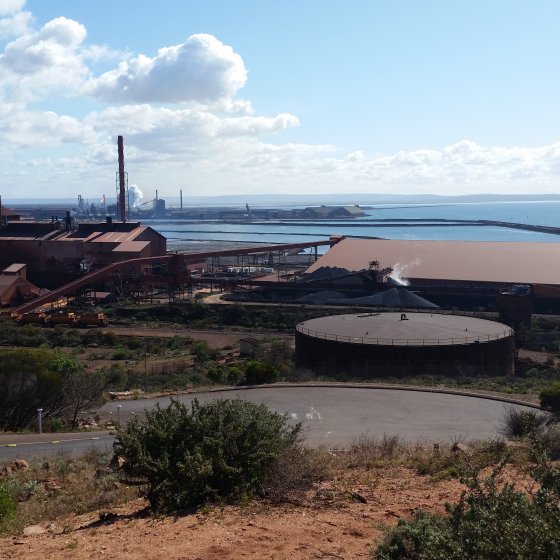Industry
Whyalla
The Whyalla Steelworks, located at the northern edge of Spencer Gulf, has the capacity to produce 1.2 Mtpa of cast steel and 475 ktpa of hot rolled product.
Although the majority of emissions from the steelworks is carbon monoxide, the primary pollutant of concern for human health is PM10. This is because the majority of carbon monoxide emitted from the plant is dispersed via the stack and does not reach ground level where it can impact human health. Also, the PM10 particulate pollution is emitted from a number of sources including the operation of the steelworks, dry conditions and dust storms.
The steelworks has invested in improving its operations to reduce emissions from the plant.
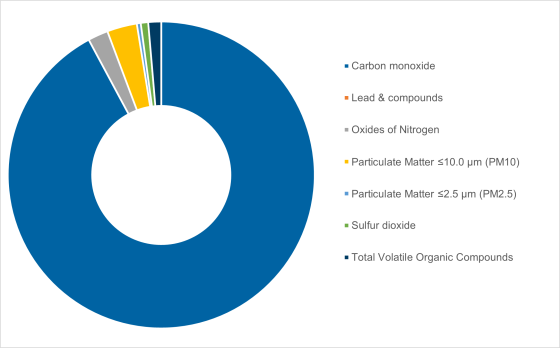
Port Pirie
The Port Pirie lead and multi-metal smelter has been operating continuously since 1889. It is an important contributor to the state economy and is a significant employer in the region, but lead dust produced during smelter operations over 130 years has been deposited in the local environment. The primary lead smelter was transformed and upgraded into an advanced multi-metals processing and recovery facility, with the refurbished plant officially opening in January 2018. This is expected to decrease the amount of lead and sulfur dioxide emissions from the plant. Nyrstar is licensed by the EPA.
The EPA monitors the two primary pollutants in Port Pirie: Lead and SO₂. Airborne lead is monitored at four locations: Port Pirie West Primary School, Oliver Street, Ellen Street and Frank Green Park. This is done to ensure that human health is not adversely affected, for licensing purposes, and it is also a requirement set by the AAQ NEPM. Airborne lead levels are rated as fair in Port Pirie and very good across the rest of the state. Annual average levels of SO2 have been variable at the Port Pirie Oliver Street air quality monitoring station over the assessment period (2007 to 2021), but have generally decreased since 2016.
Port Pirie has an ongoing air quality monitoring program to track emission levels of dust (PM10), sulfur dioxide and lead in air, which is also a requirement set by the AAQ NEPM. The airborne lead concentration data collected can also be accessed on the Data SA website.
The Targeted Lead Abatement Program was established in 2014 as a joint initiative between Nyrstar and the South Australian Government with the aim of reducing blood lead levels of children living in Port Pirie.
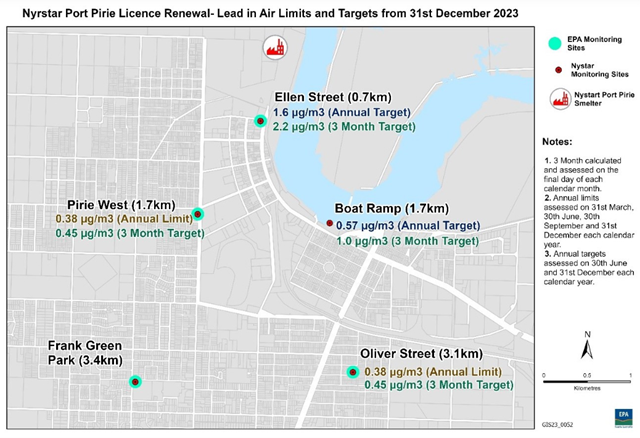
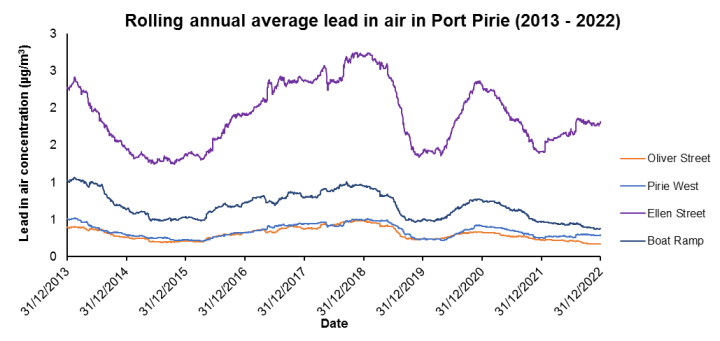
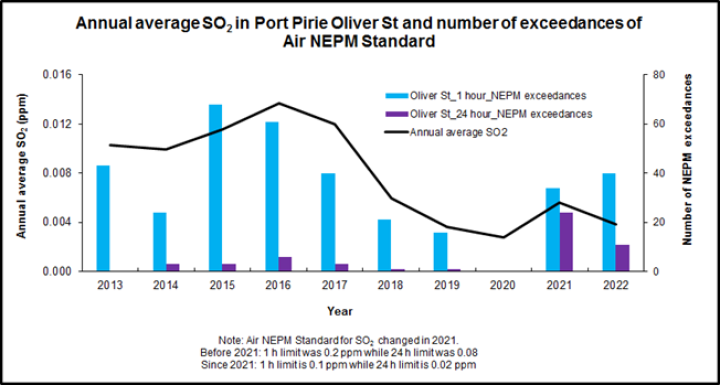
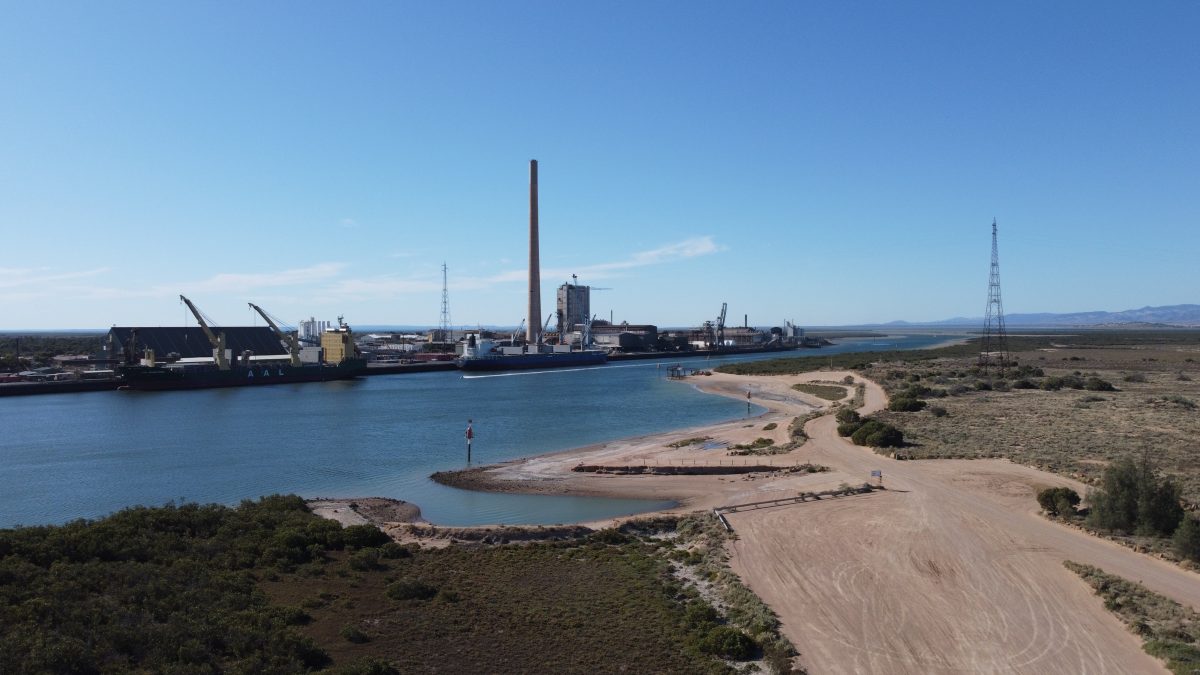
Further information
Adelaide
Port Adelaide – ADBRI Cement
The ADBRI Cement (formerly Adelaide Brighton Cement) site is located on the LeFevre
Peninsula. It is a source of dust emission to the residential areas of
Birkenhead, Peterhead and Largs Bay. ADBRI Cement produces a range of cement and
cement products and is regulated by the EPA. Conditions of the licence
require ADBRI Cement to implement several management plans to address
environmental considerations at the site and meet specific monitoring,
reporting and notification requirements. These requirements aim for
continuous environmental improvement at the site and compliance with
legislation. The EPA also measures particulate pollution in Le Fevre and
North Haven.
Sellicks Hill – Southern Quarries
Southern Quarries has been operational since the early 1970s and is regulated primarily by the Department of Energy and Mining (DEM). It is also required to be licensed by the EPA for activities of environmental significance. Licence conditions include dust prevention, stormwater management, waste management and operational management.
The Sellicks Hill Quarry is an area of ongoing focus for the EPA to
ensure that site operator Southern Quarries is taking appropriate steps
to manage dust. Over the past years, the EPA has been in regular contact
with Southern Quarries and has conducted various compliance activities.
White Rock Quarry – Hanson
DEM is the lead regulator of White Rock Quarry. The EPA and DEM work as co-regulators to ensure that regulation of Hanson is efficient and without unnecessary duplication, and that the environmental requirements are met effectively.
Hanson currently undertakes continuous air quality monitoring of PM10
at an off-site location in the community. It also undertakes dust
deposition monitoring, which captures all the dust deposited from the
air at set locations over a period of one month. From July 2022, Hanson
also commenced the ambient air quality campaign for respirable
crystalline silica in dust.
Linwood Quarry – Boral
Linwood Quarry, established in 1882, is located on Clubhouse Road,
Seacliff Park. The EPA co-regulates the Linwood operation with DEM, with
principal responsibility for management of key issues including noise
and dust from blasting activities.
